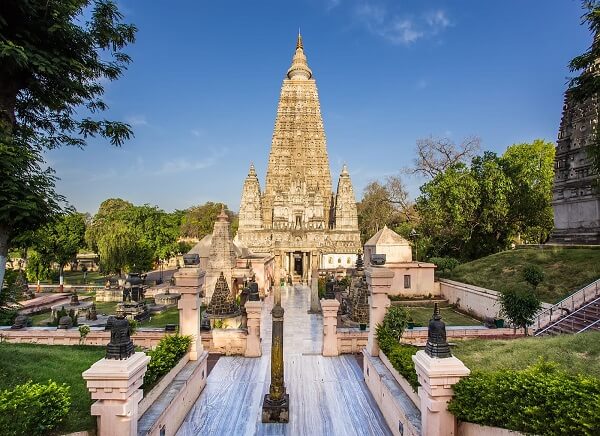Vishnupad Mandir is a Hindu temple in Gaya, Bihar, located 4 kilometers from Gaya Railway Station and 10 kilometers from Bodhgaya Bus Station. It is one of Gaya's oldest sacred temples and one of the most popular destinations to visit as part of Bodhgaya Tour Packages.
Vishnupad Temple is dedicated to Lord Vishnu and is located on the banks of the Falgu River. The Vishnupad temple was built during the reign of Samudragupta, who ruled over a huge kingdom in the 5th century CE, according to historical documents. The Basarh Seal, unearthed at Vaishali, is the inscriptional source for this evidence. The Mehrauli Pillar inscription of King Chandragupta II provides more proof. The inscription identifies this King as a Lord Vishnu devotee and chronicles the construction of a 'dhvaja' or Vishnu pillar atop Vishnupad Hill. The Pala monarch Narayanapala dedicated a residence for ascetics at Vishnupad, according to a 9th-century inscription. The Gadadhara temple, which is part of the Vishnupad temple complex, was erected by Vishvarupa, the monarch of Gaya, according to a document dated 1058 CE. Though the temple's origins are uncertain, Rani Ahilya Bai Holkar, the queen of Indore, erected the current octagonal building in 1787.
Lord Vishnu is claimed to have pushed his foot onto Gayasura's body, creating an impression on the rough surface, according to the Vishnupad temple. According to mythology, Gayasura, a demon, obtained the boon after a long period of penance. Anyone who looks at him, according to the boon, will be saved. The notion of Karma and its consequences were becoming obsolete as a result of this indiscriminate activity. To prevent this, Lord Vishnu placed his foot on Gayasura's chest and drove him underneath the earth's surface. When Gayasur pressed him for food, Vishnu said that he would not go hungry and that whomever offered him food would be saved. As a result, people travel there to perform 'Pind-Daan' for their loved ones. The day Gayasur doesn't get his meal is thought to be the day he returns to the world. In the temple, a 40-centimeter-long impression of the Lord's foot may be seen, and pilgrims worship it on a regular basis.
The Shikara style has affected the temple's architecture. The main shrine, with a 100-foot-high Vimana and a pillared Mandapa, is the temple's focal point. The Shrine's interior is octagonal in form and faces east. The temple holds a 40 cm long footprint of Lord Vishnu known as Dharmasila, which is encased in a basin constructed of silver plates, as the name indicates. This footprint also contains symbols linked with Lord Vishnu's characteristics, such as the conch, disc, and mace. The temple also contains shrines to deities such as Lord Narasimha and Lord Shiva.
In the month of Pitripaksha, an unique fair is held on the temple grounds. Pitripaksha is a Hindu festival in which Hindus pay their gratitude to their ancestors, particularly via food offerings. A Pind Daan performed by family members of the deceased soul during Pitripaksha is beneficial.
Timings: 9 AM - 12.30 PM & 5 PM - 8 PM
Entry: Free








 +91-7303039611
+91-7303039611